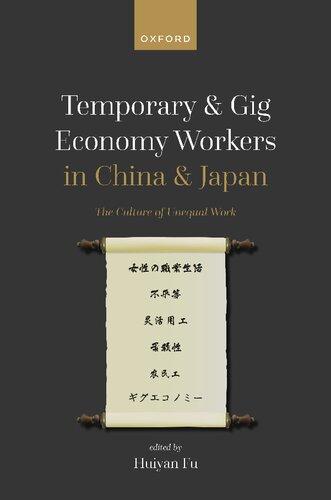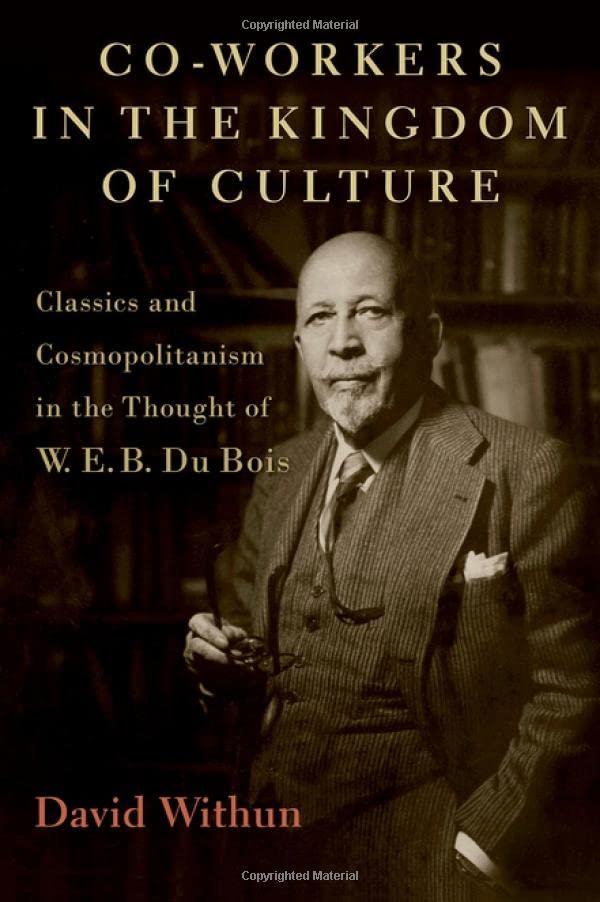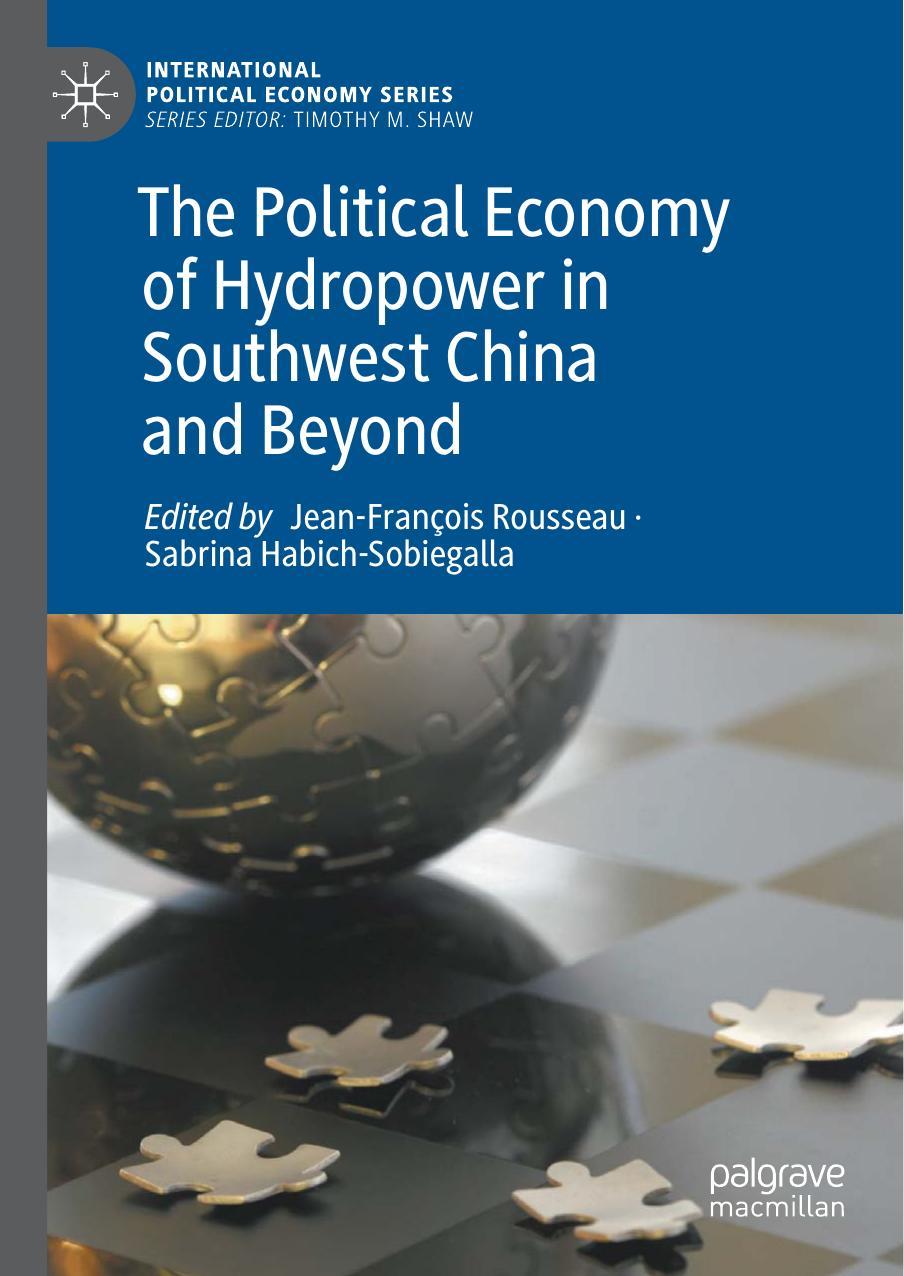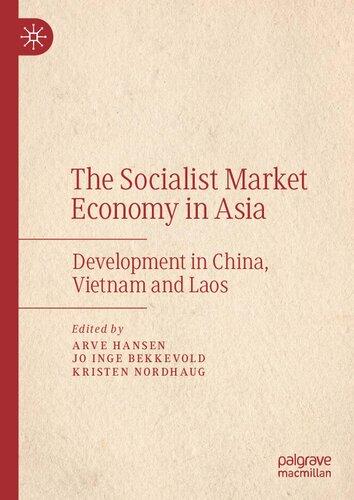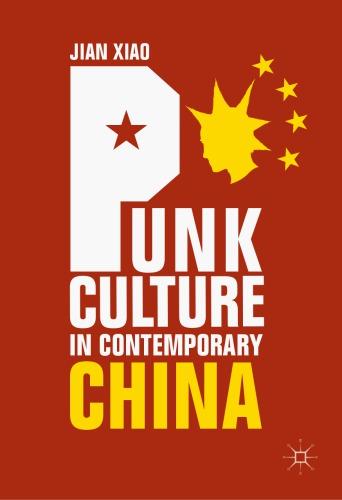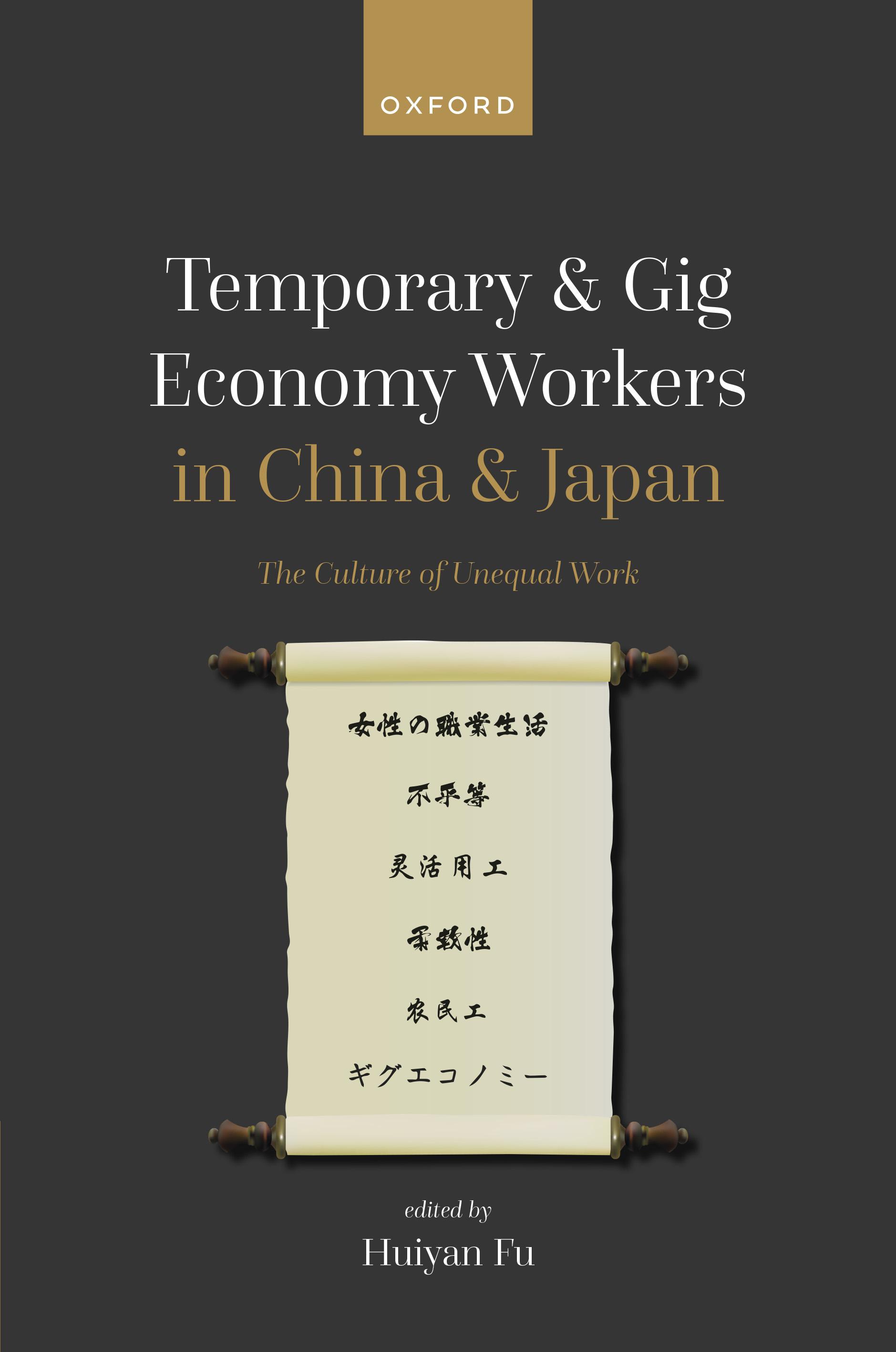Tomymentors
Foreword
Precariousworkhasemergedasakeychallengeforworkers,theirfamilies,andsocietiesinthetwenty-firstcentury.Thistermdenotesworkthat isuncertain,unstable,andinsecure.Mostimportantly,itshiftstherisksof workfromemployersandgovernmentstoindividualsandtheirfamilies, andsoprecariousworkerstypicallyhaveonlylimitedsocialandlegalprotections.TheseriskshavebeenexposeddramaticallyduringtheCovid-19 pandemicinthecaseoftemporaryandgigworkers,manyofwhomprovideessentialservicesdespiteexperiencingfinancialinsecurityandbeing exposedtodangerousconditions.Therealizationthatprecariousworkiscentraltoaddressingamyriadofsocialandeconomicproblems—suchashealth, povertyandinequality,familyformation,socialintegration,andindividual well-being—hasputthisage-oldtopiconthefrontburnerforsocialscientists andpolicymakersaroundtheworld.
Therecentfocusonprecariousworkreflectsmajoreconomicshiftsinthe globaleconomy.Macrostructuralforcesassociatedwithglobalizationand technologicalchangehavecreatedanincreasinglycompetitiveglobaleconomy,encouragingthespreadofneoliberaleconomicandpoliticalpolicies tomakelabourmarketsandemployersmoreflexibleandreconfiguresocial welfareprotections.Thishasshiftedthebalanceofpowerinfavourofemployersagainstlabour,andtransferredtherisksofworkandresponsibilitiesfor socialprotectionstoworkersandtheirfamilies.Temporaryandgigworkers areespeciallyvulnerabletothesechanges.
Whileprecariousworkisuniversal,itiscross-nationallyvariable,asthe natureofthisliberalizationofworkandsocialprotectionshasdiffered, dependingonacountry’spoliticalsituationandthecollectivepowerofworkers.Thecharacterandconsequencesofprecariousworkalsodependona country’scultureandhistory,whichshapetheinstitutionsofworkandhow individualscometounderstandandadapttoprecariouswork.
Thisbookisatimelyandwelcomecontributiontothecurrentdialogueaboutprecariousworkanditsoutcomes.Itisespeciallynotablefor advancingourunderstandinginseveralmainareasthathavebeenrelatively neglectedinpreviousresearch.First,ithighlightstheinterplaybetweencultureandpolitical–economicforces,drawingontheanthropologicalnotionof a‘totalsocialphenomenon’thatemphasizessocietyasanorganicwholethat
providesthecontextwithinwhichindividuallivesunfoldandtakeonmeaning.Inthisview,cultureservestoreinforceandinterpretthestructural changesinducedbypolitical–economicresponsestoneoliberalism.Second, severalchaptersilluminatehowpeoplecopewithprecariousjobs.Theseanalysesshowthatindividuals’responsestosuchjobsarenotgiven,butthattheir expectationsandthemeaningstheyascribetotheirexperiencesandidentitiesasprecariousworkersdependonculturalandinstitutionalcontexts. Third,thebookillustrateswaysinwhichworkersseektoamelioratesomeof theconsequencesofprecariousworkthroughcollectiveformsofresistance. ThesecollectiveactionsrangefromunionstolabourNGOs,dependingon thepossibilitiesprovidedbypoliticalandindustrialrelationssystems.
Comparativestudiesarenecessarytoexaminethesekindsofquestions,as theyrevealthecharacterofprecariousworkindifferentsocioculturaland political–economiccontexts.Thisenablesunderstandingofsimilaritiesand differencesintherolesofglobalanddomesticfactorsinshapingprecariousworkanditsconsequencesandsuggestssomegeneralizableconclusions. ThecomparisonofChinaandJapanisaptforexplicatingprecariouswork asatotalsocialphenomenonandsheddinglightontheinterplaybetween institutionsandculturesininfluencingworkarrangementsandindividuals’ experiences.
Thetwocountriesaresimilarinsomeways.Botharelargeandpowerful economies,withChinaandJapanrankingasthesecondandthirdlargest economiesintheworldintermsofGDP.Precariouswork,intheformof non-regularworkarrangementssuchastemporaryandgigwork,constitutes alargeandgrowingcomponentofworkineachcountry.Bothcountrieshave commonculturalinfluences,notablyConfucianism,thesystemofthought andbehaviourthatemphasizestheimportanceoffamily,socialharmony, hierarchy,andcollectivism.Theseprincipleshaveinfluencedmanyofthefeaturesofworkinthesecountriesandguidedthewaysinwhichworkersmake senseoftheirlives.
ChinaandJapanalsodifferinsignificantways,allowingacomparative assessmentofdifferencesinprecariousworkproducedbydiversepolitical systemsanddomesticdynamics.Whilebothcountriesexhibitformsofdualismintheirlabourforces,thebasesofthisdualismdiffer.InChina,thebasic dualismisbetweenurbanandruralworkers,adividereinforcedbythehukou householdregistrationsystemthatprovidesvarioussocialandlegalrights andbenefitstourbanbutnotruralcitizens.InJapan,thedualismbetween regularandnon-regularworkisheavilygendered,withwomenbeingoverrepresentedinprecariouswork.Dualisminbothcountriesissupported
byConfucianculturaltraditions:theemphasisonarigidhierarchyunderlyingtheurban–ruraldivideinChina;andthemalebreadwinner–female homemakermodeldefiningfamilyrelationshipsinJapan.
Moreover,thepolitical–economicsystemsofthetwocountrieshavepatternedtheirresponsestodevelopmentsintheglobaleconomy.China’s state-ledeconomicmodelencouragednationalandlocalgovernmentsto providesocialprotectionstopromote‘socialharmony’anddampenworker unrestbyruralmigrants.Japan’semployer-dominatedenterpriseunionism hasencouragedthedevelopmentofcommunityunions,thoughthesehave nothadmuchimpactonpublicpolicy,whichhasbeenfocusedmoreon theinterestsofemployers.Inbothcountries,cultureagainsustainsthese industrialrelationsandsocialwelfaresystems.
TemporaryandGigEconomyWorkersinChinaandJapan advancesour understandingofthedynamicsofprecariousworkandhelpstobridgethe gapinresearchonprecariousworkbetweenstudiesofinstitutionsandcultures.Insodoing,itdrawsourattentiontoimportantimplicationsofthe expansionoftemporaryandgigworkinthesecountriesforindividualsand theirfamilies.
ArneL.Kalleberg KenanDistinguishedProfessorofSociology
UniversityofNorthCarolinaatChapelHill,USA
ListofFiguresandTables
1.OldandNewInequalities:CitizenlyDiscountingand PrecariousWorkinaChangingChina
HuiyanFu
2.Gender,PrecariousLabour,andNeoliberalisminJapan
SaoriShibata
3.TeleworkinginPandemicJapan
MachikoOsawaandJeffKingston
4.OrganizingaroundPrecarityinChina
JudeHowell
5.PrecariousWorkandChallengesFacingJapaneseUnionism
ArjanKeizer
6.OrganizingTemporaryAgencyWorkersinJapan:Two TypesofInclusiveUnionResponses
AkiraSuzuki
7.NegotiatingGender,Citizenship,andPrecarity: MigrantWomeninContemporaryChina
NanaZhang
8.Hierarchies,Shadows,andPrecarity:Cultural ProductiononOnlineLiteraturePlatformsinChina
ElaineJingZhao
9.MakingSenseofInequalitiesatWork:TheMicropolitics ofEverydayNegotiationamongNon-RegularWorkers
ShinjiKojima 10.‘I’mNota Real Freeter’:AspirationandNon-Regular LabourinJapan
EmmaE.Cook
Introduction:TheCulture ofUnequalWork
TempsandGiggersinChinaandJapan
HuiyanFu
I’lltakeaparacetamolifIhaveatemperatureandpullmyselfup becauseIdon’thaveanyothermeansofearningandthisismy livelihood.—a42-year-oldUberdriverinLondon
TheGuardian, 17March2020
IfeellikeI’minareallyterriblelottery.Iwanttoputfoodonmytable. Iwanttopayaverylargesumofbills.—AfreelancewriterintheUS seeingherfinancestakeahitbycoronavirusandstrugglingtoaccess governmentaid
CNN, 13April2020
Coronavirus(Covid-19),anunprecedentedandstill-unfoldingglobalpandemic,laysbarestarkrealitiesfacedbyworkersinprecariousformsof employment.Drivers,couriers,andcarersareatheightenedriskofcontractingandtransmittingcoronavirus,butsimplycannotaffordtomiss work.Freelancersand(in)dependentcontractorsseetheirworkdryup andhavetocontendwithitsfinancialimplications.Whilegovernment emergencyschemesprovidetemporaryrelief,theytendtodiscriminate againsthighlyprecariousemploymentcategories,aswellasimposingobstacles(suchasonerousadministrativeburdens)toassessingbenefits.The resultingincreasedhealthandfinancialvulnerabilityamongprecarious workers—manyofwhomhavebeendesignatedas‘keyworkforces’during thepandemic—isapainfulreminderofgrowingsocialpolarizationbetween thehavesandthehave-nots.AsFairworkresearchersattheUniversityof Oxford(2020a)pointout,coronavirusbringstolightafundamentalissue that‘unlessthoseprovidingthecareareprotected,noneofusare’.Indeed, HuiyanFu, Introduction:TheCultureofUnequalWork.In: TemporaryandGigEconomyWorkersinChinaandJapan EditedbyHuiyanFu,OxfordUniversityPress.©OxfordUniversityPress(2023). DOI:10.1093/oso/9780192849694.003.0001
theinterconnectednatureofsociety,sharpenedbytheglobalhealthcrisis, makesitimperativethatwedelvedeeperintotherootsofprecariouswork thathasacceleratedacrosstheworldoverthepastthreetofourdecades. Precariousworkcanbebestdefinedasthe uncertainty, instability,and insecurity ofworkinwhichworkersbeartherisksofwork(asopposedto businessesorthegovernment)andreceivelimitedsocialbenefitsandstatutoryprotections(Hewison2016; Kalleberg2000; KallebergandVallas2018; Vosko2010).Underneoliberalglobalization,aproliferationoftemporary jobsinvariousbewilderingformshasspannedawiderangeofemploymentcategoriesacrossalmostalleconomicsectors.Inaddition,thepast decadehaswitnessedarapidlyswellingnumberofworkersinaso-called‘gig economy’or‘onlineplatformeconomy’characterizedbynewtechnologyenabledlinksofwork(Prassl2018).Beingpaidpergigorassignment,which canbeanythingfromdeliveringanddrivingservicestocreativemarketingandcomputerizedtasks,gig-economyworkersarecommonlytreatedas self-employed.However,disguisedorbogusself-employmenthasbeenrife, whichinvolvesemployers’deliberatemisclassificationofworkersasindependentcontractorsforthepurposeofcostreduction(Fairwork2020b).The lureofflexibility,freedom,andinterestingtechnology,toutedprominently inpoliticalandpopulardiscourses,appearstobeanimportantdrivingforce behindthedevelopment.Nevertheless,agreatmanynewgiggersandtraditionaltempssharetheaforementionedkeycharacteristicsofprecarious work,whichisstarklyrevealedbythecoronaviruspandemicwhentheyare deprivedofthe‘luxury’ofself-isolatingandworkingfromhomewithsocial protectionentitlements.As KallebergandHewison(2013) remindus,the growthofprecariousworkconstitutesaseriousglobalchallengeandhas wide-rangingconsequencesaffectingworkers,theirfamilies,andthesocietyatlarge.Itisanall-encompassingsocialphenomenonthattoucheson manysalienttopicsforsocialscientists,rangingfrominequality,industrial relations,andlabourmarketregulationstosocialwelfareandsustainability. Againstthisbackdrop,thisbooksetsouttoexploreprecariousworkand socialinequalitiesinChinaandJapan,withaviewtoshowingbothnationspecificfactorsandgeneralizableinsightsthatcouldinformothercountries. Itaimstocontributetotheoryandpracticeonthreemainfronts.First,while alargenumberofstudiesexistonpoliticalandeconomicexplanationsfor precariouswork,relativelyfewhavefocusedoncultureanditsoft-hidden pervasiveeffects.Inthisrespect,ChinaandJapanofferaprimeexample, notleastbecausetheirculturaltraditionsareintriguinglydistinctfrom westernones,therebyforcingustoquestionourownoft-taken-for-granted (ethnocentric)assumptions.Byforegroundingtheculturaldimension
anditsintricateentanglementwithpolitical-economicinstitutions,the bookconceptualizesprecariousworkas‘atotalsocialphenomenon’,a keynotioninanthropologythatemphasizesthepluralandinterconnected aspectsofsocialrealities.Secondly,comparingChinaandJapan,thesecondandthird-largesteconomiesintheworld,isadauntingyetworthwhile endeavour.Despitesubstantialdifferencesintheircontemporarypolitical–economicsystems—whichseemtopresentimpedimentstocomparative research—thetwoConfucianism-influencedEastAsianpowerhousesare culturallyproximate,historicallyexertingconsiderableinfluenceuponeach other.Thirdly,theimportanceofstructural-institutionalforcesnotwithstanding,thebookplacesspecialemphasisuponhowrealpeopleineveryday lifeperceiveandactuponprecariouswork.Admittedly,combiningmacrostructuralscrutinyandmicro-agencyempiricismcangoalongwaytowards abetterunderstandingofcomplexsociallife,yetitremainsoft-neglectedor under-researched.Inaddressingthesegaps,thebookbenefitsfromextensiveinterdisciplinarycollaborationandcross-fertilizationofknowledgeand ideasfrommultiplefieldsincludinganthropology,sociology,businessmanagement,internationaldevelopment,andcommunication.
InChinaandJapan,precariousworkismanifestedpredominantlyinthe formofnon-regularemployment(NRE),whichincludetemporary,parttime,andfixed-termcontractsandagency-mediatedlabourdispatch.Inboth countries,thesizeofNREhasenlargedtwofoldsincethe1990s;around 60percentoftheChineseurbanworkforceandnearly40percentofthe JapanesenationalworkforcearenowengagedinNRE.Aselsewhere,therise ofonlinelabourplatformshasbeendrivingashiftfromtraditionaltemps— manyofwhomareclassifiedasemployees—towardsself-employedgiggers. Theexpansionofprecariousworkgoeshandinhandwiththeintensificationofpre-existinglabourmarketdualismandinequalities.InChina,rural migrantsarethequintessentialembodimentofprecariouswork;despitetheir enormouscontributiontothecountry’seconomicgrowth,theyhavecontinuedtobesegregatedfromurbancitizensinprofoundsocio-economic termsbecauseoftheirsecond-classcitizenshipstatus.InJapan,women,who havelongbeenrelegatedtothemarginsofpolitical-economiclifeasparttimewageworkersandfull-timefamilycare-givers,bearthemajorbruntof precariouswork.ThecontrastingdemographicfeaturesinChinaandJapan lendcredencetotheimportanceofsocialstratificationvariables(suchas gender,class,age,citizenship,ethnicity,andrace)inbuildingandshaping thecontoursofprecariouswork.Significantly,thesevariablesareimbued withnation-specific,deep-seatedculturalvaluesandpracticesthatoften eludepolicymakersandpopularperceptions.Byadoptingaculture-centred
holisticapproach,thebookintendstobringamoreintegratedandnuanced understandingofprecariousworkinChina,Japan,andbeyond.Specifically, itexploresthefollowinginterrelatedsetsofresearchquestions:
1. Inwhatwayshaveculturalvaluesbeeninvolvedorimplicatedinthe formationofkeypolitical-economicinstitutions,suchasgovernment policies,socialwelfare,regulatorysystems,andemploymentrelations thathave,aswelldemonstratedbyexistingstudies,playedanimportant roleinthegrowthofprecariouswork?
2. Whatmaybetheroleofemergingnewinstitutionalactors(suchas communityunionsandcivilsocietygroups)inresistingandotherwise reactingtoprecariousworkasaserioussocialproblem,especiallywhen traditionalinstitutionalactors,i.e.thestate,employers,andlabour unions,failtoprotectprecariousworkers?
3. Howisprecariousworkexperiencedbyrealpeopleineverydaylife? Whatmaybethereasonsbehindtheoft-observedgapsbetweensocial expectationsandrealities,especiallyamongthemostdisadvantaged groupsofworkers?
4. Finally,intacklingthenegativeconsequencesofprecariouswork,what generalizableinsightsandlessonscanbelearnedfromChinaandJapan?
Therestofthisintroductorychapterisorganizedintofoursections.Abrief theoreticalframeworkisfirstlaidout,whichfocusesonculture’srelationship withinstitutionsanditsanalyticalimportanceinunpackingprecariouswork. Thesecondsectionturnstoacomparativeexaminationofmajorthemesarisingfromtheaboveresearchquestions.Thisisfollowedbyasummaryofthe book’sstructureandchaptersinthethirdsection.Theconcludingsection outlinesbroadimplicationsthataimtoinformpolicy,practice,andfuture research.
Precariousworkasa‘totalsocialphenomenon’:
Cultureandinstitutions
Inthisbook,precariousworkisidentifiedasasimultaneouslypolitical,economic,andculturalphenomenon,whatanthropologistsrefertoasa‘total socialphenomenon’.DerivedfromMarcelMauss’sclassictreatiseon TheGift (1954),thenotionisusedtoaccentuatethewholenessandinterconnectednessofallfacetsofhumanexistence.Ratherthanbeingseparatedinto discreteanddisparateunits,societyisconceivedofasarelatively‘seamless’
and‘organicwhole’(Ortner1984:148).Thistheoreticalbasis,alongwith itsmethodologicalcompanionethnography,isknownasanthropological holism,whichdefinesadistinctstyleofinquiry.Holismnecessitates,first andforemost,adeepandthoroughunderstandingofcontextorlifeworlds inwhichtomakesenseofanyformsofhumanlives.Itsintellectualgenealogycanbetracedbackto,andisentangledwith,someofthemajortraditions inwesternthinking(OttoandBubandt2011).Earlywesternanthropologists oftenemployedholismtocomparethekindsofwholesthattheysawinthe livesofotherswithlifeintheirownworld.Thecomparisoninturnprovidesrevealinginsightsintotheideologicallimitsofindividualismandits variationsinthewest,whicharedeeplyentrenchedinpolitical,economic, religious,moral,andmanyotherareasoflife(Lukes1973).Asthearchetypal westernvalue,individualismidealizestheselfasasolid,freeentity,seemingly devoidofsocialties(Dumont1985, 1986).Thisseparationbetweenindividualandsocietystandsinmarkedcontrasttomanynon-westerncultural traditions;inbothChinaandJapan,individualinterestsarecloselyconnected with,andsubordinatedto,sociallyprescribednorms,albeitindifferentways. Indecipheringsuchcontrastingandcontradictorylifeworlds,holismlends itselftoadistinctvantagepointfromwhichtotranscendthesituatednessof westernknowledgeandtoreflectcriticallyontheconstitutionoftheseworlds (OttoandBubandt2011:11).
Despiteitscriticalpotential,holismisnotoriouslyvagueandproblematic. Thisisprimarilycausedbyaperplexingvarietyofinterpretationsandapplicationsamongscholars.Foronething,prevailingdisciplinaryboundaries tendtogeneratenotonlydifferentemphasesonthepracticeof‘doingitin context’butalsovaryingweightgiventoaparticulardimensionofcontext. Foranother,evenwithinanthropology,controversyhasbeenaprominent featureofthehistoricaldevelopmentofholism.Untiltheearly1970s,anthropologywasdividedbetweentheBritishschoolof‘social’anthropology andtheAmericanschoolof‘cultural’anthropology.Durkheim-influenced Britishanthropologistsapproachedculturefromadistinctivesociological anglewithanemphasisonpowerstrugglesandasymmetricalsocialrelations (see,for example,Cohen1969, 1974).Bycontrast,Americananthropologistsleanttowardsindividualautonomousinterpretationsofcultureas‘a webofmeanings’(Geertz1973).Thesubsequentparadigmshifttowards‘discourseanalysis’or‘symbolicanthropology’(Parkin1984;Bourdieu1991)has broughttogetherthetwofociasacollectiveconcern,andrenewedthedialecticalrelationshipbetweenindividualinterpretivefreedomandstructural–institutionalconstraints.Morespecifically,thenewparadigmaccentuatesthe roleoflanguage—anelementandreflectionofculture—andpowerrelations
inconstructingsocialrealities.Sincethen,culturehasbeenwidelyrecognizedasanever-continuingdiscursiveprocessinwhichasociety’scorevalues,beliefs,andnormsareconstructed,maintained,mediated,challenged,or changed,aprocessintricatelyintertwinedwithpoliticalandeconomicforces. Suchaholisticandprocessualviewofculturecanmakeadistinctivecontributiontotheunderstandingofprecariouswork,especiallyintermsof bridgingthedividebetweeninstitutionalandculturaldebates.Asstated earlier,thereexistsaburgeoningbodyofliteraturethatofferscompelling macro-structuralexplanationsofthecausesandnatureofprecariouswork. Manyscholarshavebeenattheforefrontofexpoundingaseriesofdrastic changeswroughtbyneoliberalism,anewpolitical-economicorthodoxythat promotesfreemarket,freetrade,investment,financialization,deregulation, andprivatization—see Burawoy(2015) forarelativelyrecentcritique.Since the1970s,neoliberaltenets,albeitcomposinginconsistent,controversial,and highlycontestedideas,havecreatedanimpetusforthestateandbusinesses toestablishglobalproductionprocesses.Tocompeteinsuchprocesses,cost reductionandderegulationhavebecomeakeystrategicareawherelabour marketsaremademoreflexibleandprecarioustypesoflabourareincreasinglyutilized.Aracetothebottomhasensued,withdetrimentalimpacts onemploymentconditions,labourrights,socialprogress,andsustainability. Inanutshell,theseandotherstructuralchangesresultinareconfiguration oftherelationshipbetweenthestate,capital,andlabour,whichsystematicallytiltsthebalanceofpowermorefirmlyinfavourofcapitalandagainst labour.Theshiftinthepowerdynamicshasprofoundimplicationsfororganizedresistanceandthewell-beingoftheworkingclass(LambertandHerod 2016). Harvey(2005:168)isatpainstoexplainhowtheprotectivecoverings providedforlabourunderthe‘interventionist’state—which‘embeddedliberalism’allowedandoccasionallynurturedduringthe1950sand1960s—are strippedaway:
Thepowersoftradeunionsandotherworking-classinstitutionsarecurbedordismantledwithinaparticularstate(byviolenceifnecessary).Flexiblelabourmarkets areestablished.Statewithdrawalfromsocialwelfareprovisionandtechnologicallyinducedshiftinjobstructuresthatrenderlargesegmentsofthelabourforce redundantcompletethedominationofcapitaloverlabourinthemarket-place. Theindividualizedandrelativelypowerlessworkerthenconfrontsalabourmarket inwhichonlyshort-termcontractsareofferedonacustomizedbasis.
Theinstitutional-structuralforcesalone,however,cannotfullygraspthe normalizationandexpansionofprecariouswork.Hereinliesthecrucial
yetoft-overlookedroleofcultureintheascendencyofneoliberalismasa hegemonicmodelofgovernance.AsHann(2006)rightlypointsout,individualismhasbeenreconstructedsoastofitinwiththeneoliberal‘free-market’ logicseenasaguideforallhumanaction:
Iftheultimatevalueinclassicalliberalthoughtwasthelibertyoftheindividual citizen,thenunderneoliberalismitistheinnovativecapacityofeachindividual entrepreneur.Everyhumanbeingisassumedtothinkandactasanentrepreneur, withtheresultthattheimpersonallawsofthemarketaredrawnintoallareasof humancapacity.
Accordingtoneoliberalideology,rational,self-interestedindividualsneed tocompeteinthemarket.Competitionisthenconceptualizedandregulatedasindividualworkers,ratherthanasthecollectivepoweroflabour markets(KallebergandHewison2013:277).Intandemwiththeindividualizationprocess,populartermssuchas‘flexibility’,‘freedom’,‘enterprisingself’, and‘personalresponsibility’haveemerged.Equippedwiththeexplanatory poweroftradition,theseculture-deriveddiscoursesplayaninstrumental roleinfacilitatingpoliticalconsentanddeflectingattentionfromthedeleteriousanddebilitatingeffectsonworkers,especiallythoseatthebottom endofthelabourmarketwithlittlesecurity,lowwages,andpoorworking conditions.Toagreatextent,theneoliberalassertionofnewindividualisticvaluesisfoistedupontheglobalprecariousworkingclass,rendering manyworkersdisorganized,dispossessed,andpowerless.Thus,cultureas apowerfuldiscursivetoolisutilizedbyrulingelitesforconstructingwhat Harvey(2005)describesasaneoliberal‘accumulation-by-dispossession’class projectwhereinmoreandmorewealthandpowerhasbeenredistributedand consolidatedineversmallerfractionsofthecapitalistclass.
Acknowledgingtheinterconnectednessofcultureandinstitutionsnotonly contributestoabetterunderstandingofprecariouswork,butalsoopensfresh avenuesforexplorationofsocialchange.Thisisperhapsparticularlypertinenttodiscussionofthe‘non-westernholism’inChinaandJapan,wherethe stateandlabourmaintaintheirdistinctlocal‘stickiness’,despitebothcountrieshavingbeenintegratedintotheglobaleconomy.Asscholarscontend, neoliberalcapitalismprovokesawayoforganizingheterogeneity,intensifies ever-complexculturalprocesses,andheightensconflicts(see,forexample, Appadurai1990; EdelmanandHaugerud2005; Eriksen2003; Giddens1990; Hannerz1992, 1996; Heldetal.1999; Mann2013).Tobesure,theincreasinginteractionandtensionbetweenindigenousculturalvaluesandimported neoliberalonesconstituteakeycharacteristicoftoday’sglobalization.This
pointstothecentralityofcultureinsocialdynamicsasasymbolic,discursive,malleable,andcontestableconstruct,therebyofferingcrucialcluesto agencyanditsroleinchallengingthestatusquo.
AcomparisonofprecariousworkinChinaandJapan
Culturalhierarchyandsocialinequalities:Ruralmigrants versuswomen
ChinaandJapanshareacommonculturaltraditionof(broadlydefined) Confucianism,whichemphasizes,amongotherthings,relationalhierarchy, family-orientedethos,harmony,andcollectivism.Incontradistinctionto Christianity-informedindividualism,Confucianismforegroundsaninterconnectedrelationshipbetweenindividualandsociety,withprecedence giventothefulfillingofsociallyprescribedrules,norms,andexpectations. Theseandothercoreculturalvalues,whichpermeatealmosteveryrealm ofsociallife,haveanimportantbearingonunderstandingthedemographic featuresofprecariousworkandinstitutionalstructuressurroundingthem.
InChina,thepredominanceofruralmigrantsinprecariousworkiscreated bythecountry’slong-existingrural-urbandivideknownashukou(household registration). Foroverhalfacentury, hukou hasinstitutionallylegitimized twoclassesofcitizenshipbasedonpeople’sresidentialstatustheyattained atbirth.Despiterecentdecades’reforms,itcontinuestofunctionasakey socialentitlementmechanismthatconferspublicbenefitsandserviceson urbancitizenswhiledenyingmanyofthemtoruralcitizens.Thepersistence of hukou hasmuchtodowithConfucianhierarchicalprejudicesthatare deeplyentrenchedintheChineseculturalhistory.SinceDeng’s‘open-door’ economicreforms,hundredsofmillionsofpeasantworkersknownas nongmingong haveflockedtocitiestotakeupjobsinmanufacturingfactories, constructionsites,andincreasinglyserviceindustries—thekindofjobsin typicallyinformalorprivatesectorsofeconomywithleastautonomy,protection,anddignity.Asthequintessentialembodimentofprecariousconditions ofexistence,ruralmigrantsaredisproportionallysubjecttoemployment insecurity,lowpayandbenefits,wagearrears,lackoftrainingandupward mobility,alienation,discrimination,andviolence(see,forexample,Lee1995, 1998;Pun2005;PunandLu2010a,2010b;HuangandYi2015;Swider2015). Theirsecond-classcitizenshipisfurtherendorsedbythestate’sneoliberal modernizationdiscourses,whichlabelruralmasses‘backward-looking’,‘burdensome’,‘dangerous’,and‘desperateforamodernrevamp’.Thesediscourses
areoftencentredon suzhi (humanquality),whichhasbecomea‘cultural fixation’,frequentlyinvokedbythestateandthemediatoproblematize thepeasantbodyashavinglowqualityandhinderingdevelopment(Anagnost1997).Responsibilityisthenadroitlyplacedontheindividual,rather thanonthehistoricalandsocio-structuralconditions,forfailingtobecome thestate’sidealcitizen.Thattheruralmassesshouldbedisciplinedintoa moderncitizenryseemstojustifyjust-in-timeprovisionofacheapandrelativelydocilelabourforcewhohavetoiledatfuellingChina’sextraordinary transformationintoaglobalindustrialpowerhouse.FromMao-eraliberation‘heroes’tomodernization‘losers’,thedrasticshiftofthepeasantimage revealstheimportanceofcultureinpolicymaking,economicreforms,and socialstratificationprocesses.
InJapan,labourmarketdualismismarkedbygender.Despitehaving oneofthehighestratesoftertiaryeducationandworkparticipationinthe developedworld,Japanesewomenaccountformorethantwo-thirdsofall non-regularworkers.Whilegender-basedsegmentationinmanyindustrializednationstakesplacelargelyalongoccupationallines,inJapanitis locatedwithinoccupationsalongthelinesofprecariousemploymentstatus.Sincethelate1980s,increaseduseofnon-regularworkershasbeen thesinglemostimportantchangeinthelabourmarket.Thegenderedprecariousworkismostpronouncedamongsmallandmedium-sizedfirms, byfarthelargestsegmentofJapan’snationalworkforce,whoseworking, earning,andbargainingenvironmentfortheperipheralmajorityisprofoundlydifferentfromthatofcore,maleregularworkersinlargefirms(see Chalmers1989).Likethehukou-basedsegmentationinChina,thegendered core-peripherydualisminJapanisunderpinnedbyConfucianism-informed assumptionsconcerningwomen’sfamilialrolesas‘goodwifewisemother’ (ryōsaikenbo)andmen’sbreadwinnerresponsibilitiesas‘acentralsupportingpillar’(daikokubashira)inthetraditionalhousehold.Thisdistinct ‘reproductivebargain’(Gottfried2015)hasbeenalong-standingyetofthiddenculturalpillar,whichexplainsmuchofJapan’spost-wareconomic ‘miracle’andisindeedconsequentialfordefiningthecontoursofprecarious work.GenderpatriarchyisalsoaprominentfeatureoftheJapanesecorporatemanagement,asevidencedbyacustomarydivisionbetweenwomen’s ‘auxiliary’employmenttrack(ippanshoku)andmen’s‘comprehensive’career track(sōgōshoku)leadingtomanagementpositions.Moreover,itisembeddedinarangeoffamilyandwelfarepolicies,regulatoryframeworks,and industrialrelations,whichineffectexcludesthemajorityofnon-regular workersfromtheprotectionofthestateandmainstreamunions(Marshall 2017; Roberts2011, 2016; Osawaetal.2013; Yun2010).Forinstance,Japan’s
spousetaxreductionsystemnotonlyencouragesemployerstooffermarried womenlow-paid,non-regularjobs,butalsocreatesadisincentiveforwomen topursueambitiousfull-timecareers(MacNaughtan2015).Theentrenched male-breadwinnerfemale-dependentfamilymodelalsoliesbehindaseries ofhigh-profile‘women-friendly’policiespromotedbythestate;acareful examinationofthesepolicieswillshowthatthesepoliciesarelargelygeared towardstacklinglowfertilityratesorlabourshortagesbypersuadingwomen ofreproductiveagetohavechildren,boostingwomen’sworkplaceparticipation(continuouslyasnon-regularworkers),andencouragingthosewho alreadyworktoputinlongerhours.
Industrialrelations:State-ledmodelversus employer-dominatedmodel
Nationalindustrialrelations,whichiscentredontheinstitutionaldynamicsbetweenthestate,capital,andlabour,serveasafocalpointfordebate on‘varietiesofcapitalism’(HallandSoskice2001).Acomparisonofthis tripartiterelationshipanditsentanglementwithcultureenablesustobettergraspcomplexsocialconditionsthatdriveprecariouswork.InChina, thestateexertsapowerfulinfluenceoverthedirectionofeconomydirectly throughagraduallyshrinkingbuthighlyconcentratedstate-ownedenterprises(SOEs)—oftenusedas‘instrumentsofmacroeconomicpolicyand industryregulation’(Kroeber2016:89).Privatedomesticandforeignenterprises,undereconomicdecentralizationpolicies,havebeengrantedmore spaceandnowcontributetothemajorityofeconomicoutputandemployment.However,theirmeaningfulautonomycanonlymaterializeif‘remainingdeeplyintegratedwithlocalgovernments’(FriedmanandKuruvilla2015: 182).Thecorollaryisadistinctmodelof‘cronycapitalism’(Pei2016)where manylocalgovernmentsusetheirauthorityand guanxi—personalnetworks orconnections,akeyconceptinChineseculture—toforgeclosealliances withbusinesses,enforcemarketdespotism,andsuppresslabourunrest.The relationshipbetweenlocalgovernmentsandbusinessesconstitutesamajor causeofthecountry’slaxregulatoryenvironmentandhasprofoundconsequencesforworkers,especiallyruralmigrantswhoaremostvulnerableto employerexploitation.Inresponsetogrowingsocialdisparitiesandconflicts intensifiedbydecadesofunrelentingmarketization,thecentralgovernment hasintroduced‘harmonioussociety’(hexieshehui)asamajorpolicyorientationsincetheearly2000s.Thenewpolicyisineffectareinventionof theclassicalConfucianconcept‘harmony’,withtheaimofreconcilingsocial
tensions,defusingclassformation,andstrengtheninghierarchicalsolidarity. Torealizethegoalof‘harmonioussociety’,thecentralgovernmentmadea seriesofpaternalisticconcessionsincludingasignificantincreaseinsocial spendingandtheenactmentofnewpro-labourlegislations(Gallagheretal. 2015).Inadditiontothisdevelopmentmodelbasedonthecentral–local governmentdivision,theabsenceofindependentunionsandcollectivebargainingrightsisanothersalientfeatureofChina’sindustrialrelations.The All-ChinaFederationofTradeUnions(ACFTU)istheonlylegitimaterepresentativeoforganizedlabour,whosefunctionisoftenderidedas‘government agencies’(FriedmanandLee2010),‘Leninisttransmission-belt’(Zhuand Warner2011),or‘benevolentmediators’servingtoensurepoliticalcontrolattheworkplace(Walder1983, 1984).Comparedtogrowingautonomy conferreduponprivatecapita,theACFTUremainsfirmlyapartofthe Party-ledstate;itsbureaucratichierarchyiscutoffbyCommunistPartyofficialsateverylevelinthepersonnelsystem(ChanandChiu2015:159–160). Althoughstate-sanctionedreformshavebeenimplementedtoimprove labour-capitalrelations,theytendtobeshort-lived,confinedtotheenterprise levelandmarkedbyconsiderablelocaldifferences.Perhapsmorestrikingly, thesereformsendorse‘individual’—ratherthancollectiveorganizing—legal rightsandareaimedatpromoting‘harmonioussociety’,maintainingstability andorder,andfacilitatingeconomicgrowth.
InJapan,industrialrelationsischaracterizedbyemployer-dominated ‘enterpriseunionism’(kigyokumiai)ordecentralizedbargainingatthe enterpriselevel.Japaneseemployersareindeedaformidableforce;they exertapowerfulinfluenceonstatepolicythroughahistoricallydeveloped cosyrelationshipwithgovernmentministries—asexemplifiedby amakudari (descentfromheaven),aninstitutionalizedpracticewhereseniorgovernmentbureaucratsretiretomanagerialpositionsinprivatefirms.The Japanesestate,comparedtotheChinesestate’s‘visiblehand’,isnotoriously elusive,withpartypoliticians,ministrybureaucrats,andemployerassociationscomposingacohesivepowertriumviratewherenooneseemsto ruletheroost—what Wolferen(1989) portraysasa‘truncatedpyramid’. ForJapaneseworkers,itistheemployer,ratherthanthestate,thatprovidesmainsocialprotection;agoodindicatoristhatJapanspentonly 0.17percentofGDPonunemploymentbenefits,comparedtoanaverageof0.68percentforallOECDcountries(OECD2020).Thepowerof employers,however,goesfarbeyondthiswell-known‘welfarecorporatism’ (LincolnandKalleberg1990)inamaterialsense.Culturalvalues,especially thosederivedfromthetraditionalfamily(ie),figureimportantlyinJapan’s post-warinstitution-buildingandmanagementstrategy;asGoodman(1998)
explains,theJapanese‘firm-as-family’employmentsystemwascreatedby appealingto‘invented’traditions(HobsbawmandRanger1983)inorderto keepworkersloyaltothefirm,maskglaringinequalities,andboostprofits. Underthisculture-infusedsystem,workers’struggleshavebeenshepherded intotheconfinesofasinglefirm.Toensurethatthefirm’sperformanceis regardedasthemostimportantdeterminant,employershavesuccessfully cultivatedaharmony-based,cooperativerelationshipwithlabourunions— aidedby,forexample,apersonnelcross-postingpracticewherebyunion officialsarenotonlyemployeesofthefirm,butoftenbecomemanagersat laterstagesoftheircareerafteratemporaryassignmentintheunion.This employer-dominatedmodel,combinedwithdeep-rootedculturalbeliefs especiallyconcerningthemalebreadwinnerofthefamily,resultsinakind of‘conservativecorporatism’(Yun2010)whereemployers,labourunions, andthestatecolludetoprotectemploymentsecurityofashrinkinglabour aristocracyof(male)regularworkers.Theburdensofjobinsecurityandcost reductionarethenshiftedtotheexpandinglabourmarketperipheryoccupiedbytemps,giggersand,moreinsidiously,‘second-tier’regular(female) workerswhoseunfavourabletermsofemploymentsharemuchincommon withthoseoflong-termtemps(Gordon2017).
Resistancefrombelow:LabourNGOsversuscommunity unions
InChina,relativelyprivilegedworkersinSOEstookthehelmofcollective protestsagainstdrasticrestructuringlayoffsduringthelate1990sandearly 2000s(Lee2000, 2002).However,thepasttwodecadeswitnessedrelentless wavesoflabourunrestamonglong-exploitedruralmigrants.Therehadbeen amarkedupswingin‘wildcatstrikes’orunofficialindustrialaction,which couldbeascribedtopervasivedisaffectionwiththestate-ledunionsandlocal governmentswhowereunableorunwillingtoprotectworkersatthepointof production.Better-educated,youngergenerationsofmigrantworkerswere lesstolerantofinjusticeandmoreeagertoengageinallmannerofresistance (FriedmanandLee2010;PunandLu2010a;ChanandSelden2014).Scholars notethattherewasalsoaqualitativeshiftfromlegalrights-basedstrugglestointerest-basedstrugglesthatdemandedhigherwages,betterworking conditions,andgreaterrespectfromemployersthanthelegalminimum (Chan2015; ElfstromandKuruvilla2014; ChangandBrown2013; Chan 2014).Againstthisbackground,labourNGOshademergedsincethemid1990sasnewinstitutionalactorsineconomicallywell-developedregions
withlabour-intensive,export-orientedindustries,suchasBeijing,PearlRiver Delta,andYangtzeRiverDeltawherelabourdisputesfrequentlyarose(Xu 2013).Theyrepresentedagrassrootsefforttoorganizeandempowerrural migrantworkersandactivelydrewonexpertiseandsupportfromHong Kong-basedlabouractivists,mainlandpro-labourintellectualsandinternationaladvocacynetworks.Theirpositiveinterventionsnotwithstanding, labourNGOshadyettosucceedingeneratingalabourmovementdueto acombinationofinternalandexternalstructuralobstacles—see Chapter4. Inparticular,thestate’sshiftingstrategies,rangingfromintermittentharassmentandmutedtolerancetooutrightrepressionandwelfareco-option (Howell2015),posedthemostdauntingimpedimenttodevelopingcollectiveactions,officiallydeemed‘massincidents’(quntixingshijian)thatwould threatenthe‘harmony’ofsocietyand‘ruling-by-law’policies.Consequently, workers’everydayresistance,despiteitsrisingnumberandintensity,was scattered,alienated,andunabletoparticipateinthepolicymakingattheclass level(Friedman2014).
InJapan,mainstreamenterpriseunionsrarelyorganizeconfrontational demonstrationsorstrikeactions,althoughthenumberofindividualdisputesadministeredbygovernmentagenciesandjudicialsystemsisonthe rise(JILPT2016).Establishedintheearly1980s,communityunionsor ‘individuallyaffiliatedunions’(kojinkameikumiai)areoneofthevery fewinstitutionaldeviceswherebyprecariousandvulnerableworkershave theirvoiceheardandseekjustice.Benefitingfromliberallegalrecognitionandpoliticalindependence,theyarefamousfordevelopingaggressive andinnovativebargainingtacticsandenablingasmallyetresilientlabour countermovement(Weathers2010; RoyleandUrano2012).Nevertheless, theoverweeningdominanceofemployersandtheir‘firm-as-family’managementethoscreatesconsiderabledifficultiesinmobilizingworkersacross differentfirms,industries,andregions.Theexclusion,ordifferentialinclusion,ofnon-regularworkersoutsidethefirmcontinuestodefineJapan’s labourmarketdualismandpresentsfundamentalbarrierstoneworganizingstrategiesamongbothmainstreamenterpriseunionsandcommunity unions.Thisisfurthercompoundedbyenduringunionfactionalismand male-dominatedleadershippractices,whichareunderpinnedbyJapanese culturalnormsconcerninggroupism,gender,andhierarchy(Fu2021).Historicallyinheritedideologicalconflictswereamajorcontributortorecurrent inter-andintro-groupfightingandsplittingatorganizationalandunionaffiliationlevels,whichpreventedcommunityunionsengaginginmeaningful networkingandbuildingrobust‘labourassociationalpower’(Kojima2017). ItisalsoworthnotingthatJapan’sstate-controlledcivilsocietylacksadvocacy
powerandistooweakandfragmentedtoofferasubstantialpartnership(see Pekkanen2006).Perhapsmorethought-provokingiswidespreadgenderandseniority-basedhierarchicalorganizationalpracticesamongcommunity unions’older-generationmaleleaders(Fu2021).Thesepracticespresumablyhindertheirabilitytoattractabroadcross-sectionofworkers,especially womenandyoungpeople,whoaccountforthebulkofprecariousworkersinJapan.Itcouldbearguedthattheinstitutionalconstraints,especially thoseimposedbythestableandlargelyunchallengedindustrialrelations structure,combinedwiththeunderlyingculturalinfluences,explainmuch ofJapan’sincreasinglypatchyandfragmentedlabourmovementlandscape. Evenoccasionallyhigh-profilecollectivecampaignssuchasHakenmura, ledbycommunityunions(Takasu2012)—whereanunwieldyjumbleof unions,politicalparties,andcivilsocietygroupsweretemporarilyconnected together—exertedlittleimpactonthepolicy-making.
Insightfromthecomparison
Theabovebriefcomparisonreveals,firstandforemost,thecomplexityof socialconditionswhereprecariousworkandinequalitiesaresituated.In particular,itthrowsintorelieftheintricateentanglementbetweenculture andsocialinstitutions,i.e.‘atotalsocialphenomenon’,whoseimpactcannot bereducedtoneatlyarrangedcategoriesandthusmeritscarefulanalyticalscrutiny.ItisevidentthatthecontrastbetweenChina’sstate-ledand Japan’semployer-dominatedcorporatismdemonstratesthedirecteffectsof nationalindustrialrelationssystemsontheexpansionofprecariouswork, theentrenchmentoflabourmarketdualism,andthechallengesfacedby emergingcountermovements.However,moreimplicitistheroleoftraditionalcultureinconstructing,maintaining,andlegitimizingtheindustrial relationsandotherkeyinstitutions,includingeconomicpolicysocialwelfare,andlegalandregulatoryframeworks.AsshowninbothChineseand Japanesecontexts,Confucianism-informedage-oldvalues(notablyhierarchy,harmony,andthesubordinationofindividualintereststocollective requirements)permeatealmosteveryaspectofsociety.Crucially,thesevaluesprovideessentialsymbolicingredientsforthediscursiveplayofpolitical languageamongtherulingelitesinthe(re)productionof‘authentic’or ‘definitive’culturaltranslations,therebyimpingingimportantlyontheway inwhichsocialrealityisperceivedbythegeneralpopulace.Such‘creativity’embodieshegemonicelements,whichshapeanddominateothers’ wills,imposethespectreofjustifiednormsofinclusionandexclusion,and
normalizeasocialorderservingtheinterestsofthedominantclass(Parkin 1984; Bourdieu1991, 2001).InChina,the‘harmonioussociety’rhetoric withitsemphasison(hierarchical)solidarityandsocialstabilityisovertly invoked,intandemwiththepromotionof‘ruling-the-country-by-law’policies,asjustificationfortherural-urbancitizenshipdivideandtheuseof authoritarianforces.Despiterecentdecades’growinglevelsofassertiveness, ruralmigrants’resistancewaseitherbrutallysuppressedoradroitlychannelledintothestate-controlledlegalandbureaucraticapparatus(Leeand Zhang2013; Howell2015).Inasimilarvein,thesymbolicpowerofculture isintegraltoJapan’smuch-vaunted‘firm-as-family’managementthatdraws instrumentallyontraditionalfamily(ie)valuesthatemphasize,amongother things,loyalty,patriarchy,andorganizationalcontinuity.Theemployerdominatedenterpriseunionismnotonlyfostersunion–management harmoniouscoordinationinsupportoffirm-centredgoals,butalso perpetuatestheiniquitousdivisionbetweenregularandnon-regularworkersthatstemsfromJapan’ssharplydelineatedmale/breadwinner/publicfemale/housewife/privateparadigm(Roberts2016; Marshall2017).Fornew institutionalactorsandchangeagentsincludingcommunityunionsand labourNGOs,suchcoreculturalvaluesas hukou-orgender-basedhierarchy appeartolieattheheartoftheirresistancestruggles(Fu2021).
Bookstructureandchaptersummaries
Asemphasizedthroughoutthisintroductorychapter,bridgingcultureand socialinstitutionsgoesalongwaytowardsobtainingamoreintegrated andnuancedpictureofprecariouswork,whichinturnenablesabetter understandingofeverydayrealitiesconfrontingworkers.Inlinewiththis approach,thebookisstructuredinthreemainpartsthatcombineboth macro-structuralexplanationsandmicro-agencyempiricism.Thefirstpart comprising Chapters1–3 providesanoverviewofprecariousworkandassociatedsocialinequalitiesinChinaandJapan,whichoutlinesbothhistorical developmentsandcurrenttrends.Thesecondpart,whichismadeupof Chapters4–6,iscentredonindustrialrelationsstructures,detailinghow organizedlabourandnewinstitutionalactorsresistandotherwisereact toprecariouswork.Againstthebroaderinstitutionalandstructuralbackgrounds,thelastfourchaptersinthethirdpart, Chapters7–10,arefocused onempiricalinvestigationsofindividualsinvariousformsofprecarious work,whoseeverydaynarrativesandexperiencesofferrevealinginsightsinto existingchallengesandfuturechanges.
Chapter1 explicateshowtherural-urbanmigrationandcitizenshipis ofcentralimportancetograpplingwithChina’sever-shiftingcontoursof precariousworkandsocialinequalities.Bydelvingintothreekeyhistoricalphasesoftransformation,thechapterunderlinestheroleofculturein legitimizingChina’smajorpolitical-economicinstitutionaltransitionsand inentrenchingtherural-urbancitizenshipdivideandotherinequalities. Chapter2 providesahistoricalperspectiveonJapan’sdistinctivelygendered core-peripherylabourdualism,andexploresarangeofissuesandchallenges arisingfromthestate’sneoliberallabourmarketreforms,theriseofthe gigeconomy,andtheCovid-19pandemic. Chapter3 focusesonhowteleworking(remoteworking),anewphenomenoninJapanemergingfromthe Covid-19pandemic,hasamplifiedexistingdisparitiesbygenderanditsintersectionswithworkstatusandfirmsize,whichbearsimportantimplications forinequalitiesinwork-lifebalanceandflexiblework.
Thesecondpartbeginswith Chapter4’ssystematictracingoftherolesof workers,unions,andlabourNGOsinimprovingthelabourconditionsof migrantinformalworkersfromtheMaoistdecadestolabourprecarityinthe post-Maoera,includingtheHu-WenperiodandthesubsequentXiperiod. Thechapteralsodiscusseshowthegigeconomyposednewchallengesto workerorganizingandopenedupformsofresistancethroughdisrupting thedigitalflowofproduction. Chapter5 comparesstrategiesfororganizingnon-regularworkersbytwomainJapaneseunionconfederations,Rengo andZenroren,withaviewtohighlightingdifferentformsofdualismand fragmentedunionmovementsthathavehinderedmainstreamunions’abilitytocontestprecarity.Drawingonthreecasestudies, Chapter6 offersa usefulviewonJapanesenon-mainstreamunionswhoseorganizingstrategiesamongnon-regularworkers,especiallytemporaryagencyworkers,are criticallyexamined.
Inthethirdpart,themicro-levelempiricalinvestigationsmeritspecial attention,sincetheyareindispensableforgaininganin-depthunderstanding ofwhatitmeanstobeaprecariousworkerinreal-worldsettings.Basedon anextensivequalitativestudyof33Chineseruralmigrantwomen, Chapter 7 bringstotheforeindividualnegotiationsofgender,citizenship,andprecarityinthevicissitudesoftheireverydaylivesduringthemigrationprocess, therebyilluminatingthecomplexwaysinwhichtheyconstructandperform identities.Thisisfollowedby Chapter8,whichinvestigatestheexperienceof aspiringwritersinChina’sgrowingonlineliteratureplatformsamidtherisinggigeconomy.Drawingonrichempiricaldata,thischapterdelineateskey featuresofcreativelabourmarkets,highlightspowerasymmetryandmultiplerealitiesofprecarity,andexplainshowindividualsrespondtotheuneven
processofplatformization.Thelasttwochaptersturntogenderedprecarity inJapan,wherenon-regularworkers’everydaynegotiationsareindeedmultifacetedandequivocal.Usingdatafrominterviewsoffemalenon-regular workers, Chapter9 bringstheconceptof‘disaffectedconsent’tobearon theunderstandingofindividualformalandinformalstruggles,especially betweenstrongfeelingsofdissatisfactionaboutprecariousemploymenton theonehand,andself-doubtinthelegitimacyandpracticalityofdemanding bettertreatmentontheother.Chapter10featuresmale freeters orfreelancers whoseoft-negativesocialportrayalscanbeascribedtopostwargenderedculturalnormsofmaleadulthoodandbreadwinnerfamilymodellinkedtothe seishain orregularlabourmarket.Throughthelensoflabouraspirationand responsibility,thischapterexploreshowmendrewvariouslyonneoliberal ideastoframetheir freeter positioning.
Concludingremarks
Itgoeswithoutsayingthatprecariousworktendstobeassociatedwiththe mostdisadvantagedgroupsofpeopleinsociety.Therapidexpansionof tempsandgiggers,inalltheirbewilderingdiversity,hasdeepenedexisting inequalitiesthatarestructuredalongasociety’sspecificintersectingaxesof stratification.InChinaandJapan,ruralmigrantsandwomenrespectively arethepredominantgroupswhoaremostsusceptibletolowlevelsofpay, benefits,andstatuaryrights,limitedtrainingandupwardcareerdevelopment,workplacediscriminationandharassment,andgenerallypoorhealth, safety,andwell-beingprovisions.Suchunsavouryworkingconditionsare responsibleforworkers’reducedcommitment,jobsatisfaction,moraleand productivity,whichhaveprofoundimplicationsforhumancapitalandsustainabledevelopmentamidloominglabourandskillshortagesfacingboth countries(CookeandBrown2015).Moreover,workersfromothergroups suchasurbancitizensinChinaandmeninJapan—particularlyofyounger generations—haveincreasinglybeenshuntedintotheever-swellingprecariousperiphery.Consequently,theprevalenceofprecariouswork,despite beingembellishedwithsuchcatchyneoliberaltrappingsas‘freedom’,‘flexibility’,and‘entrepreneurialcreativity’inpopulardiscourses,renderssecure full-timeemploymentachievableonlyforashrinkinglabouraristocracy.For many,thishasfar-reachingdeleteriousanddebilitatingeffects,asdemonstratedvividlyandpoignantlybythebook’sempiricalcasestudies.Dueto theirdistinctculturalorigins,theubiquitousgapbetweenimposedexpectationsonthepartofthestateandemployersandexperiencedrealitiesamong
